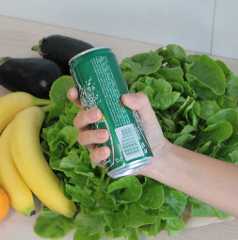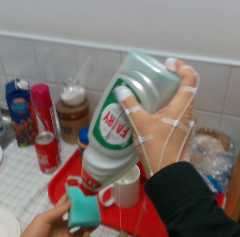- Notifications
You must be signed in to change notification settings - Fork26
[cvpr19] Demo, training and evaluation code for generating dense hand+object reconstructions from single rgb images
License
hassony2/obman_train
Folders and files
| Name | Name | Last commit message | Last commit date | |
|---|---|---|---|---|
Repository files navigation
Yana Hasson, Gül Varol, Dimitris Tzionas, Igor Kalevatykh, Michael J. Black, Ivan Laptev, Cordelia Schmid, CVPR 2019
git clone https://github.com/hassony2/obman_traincd obman_train
- Request the dataset on thedataset page
- Create asymlink
ln -s path/to/downloaded/obman datasymlinks/obman - Download ShapeNetCore v2 object meshes from theShapeNet official website
- Create a symlink
ln -s /sequoia/data2/dataset/shapenet/ShapeNetCore.v2 datasymlinks/ShapeNetCore.v2
Your data structure should now look like
obman_train/ datasymlinks/ShapeNetCore.v2 datasymlinks/obman- Follow theofficial instructions to download the dataset
- Download model files fromhere
wget http://www.di.ens.fr/willow/research/obman/release_models.zip - unzip
unzip release_models.zip
- create conda environment with dependencies:
conda env create -f environment.yml - activate environment:
conda activate obman_train
- Follow the instructions fromhere
Go toMANO website
Create an account by clickingSign Up and provide your information
Download Models and Code (the downloaded file should have the format mano_v*_*.zip). Note that all code and data from this download falls under theMANO license.
unzip and copy the content of themodels folder into the misc/mano folder
Your structure should look like this:
obman_train/ misc/ mano/ MANO_LEFT.pkl MANO_RIGHT.pkl release_models/ fhb/ obman/ hands_only/We provide a model trained on the synthetic ObMan dataset
python image_demo.py --resume release_models/obman/checkpoint.pth.tar
In this demo, both the original and flipped inputs are fed, and the outputs are therefore presented for the input treated as a right and a left hand side by side.
Running the demo should produce the following outputs.
You can also run this demo on data from theFirst Hand Action Benchmark
python image_demo.py --image_path readme_assets/images/fhb_liquid_soap.jpeg --resume release_models/fhb/checkpoint.pth.tar
Note that the model trained on First Hand Action Benchmark strongly overfits to this dataset, and therefore performs poorly on 'in the wild' images.
You can test it on a recorded video or live using a webcam by launching :
python webcam_demo.py --resume release_models/obman/checkpoint.pth.tar --hand_side left
Hand side detection is not handled in this pipeline, therefore, you should explicitly indicate whether you want to use the right or left hand with--hand_side.
Note that the video demo has some lag time, which comes from the visualization bottleneck (matplotlib image rendering is quite slow).
- This demo doesn't operate hand detection, so the model expects a roughly centered hand
- As we are deforming a sphere, the topology of the object is 0, which explains results such as the following:
- the model is trained only on hands holding objects, and therefore doesn't perform well on hands in the absence of objects for poses that do not resemble common grasp poses.
- the model is trained on grasping hands only, and therefore struggles with hand poses that are associated with object-handling
- In addition to the models, we also provide a hand-only model trained on various hand datasets, including our ObMan dataset, that captures a wider variety of hand poses
- to try it, launch
python webcam_demo.py --resume release_models/hands_only/checkpoint.pth.tar - Note that this model also regresses a translation and scale parameter that allows to overlay the predicted 2D joints on the images according to an orthographic projection model
python traineval.py --atlas_predict_trans --atlas_predict_scale --atlas_mesh --mano_use_shape --mano_use_pca --freeze_batchnorm --atlas_separate_encoder
If you find this code useful for your research, consider citing:
@INPROCEEDINGS{hasson19_obman, title = {Learning joint reconstruction of hands and manipulated objects}, author = {Hasson, Yana and Varol, G{\"u}l and Tzionas, Dimitris and Kalevatykh, Igor and Black, Michael J. and Laptev, Ivan and Schmid, Cordelia}, booktitle = {CVPR}, year = {2019}}Code related toAtlasNet is in large part adapted from the officialAtlasNet repository.ThanksThibault for the provided code !
Code for computing hand evaluation metrics was reused fromhand3d, courtesy ofChristian Zimmermann with an easy-to-use interface!
Code for the laplacian regularization and precious advice was provided byAngjoo Kanazawa !
Helpful advice to work with the dataset was provided byGuillermo Garcia-Hernando !
About
[cvpr19] Demo, training and evaluation code for generating dense hand+object reconstructions from single rgb images
Topics
Resources
License
Uh oh!
There was an error while loading.Please reload this page.
Stars
Watchers
Forks
Releases
Packages0
Uh oh!
There was an error while loading.Please reload this page.




